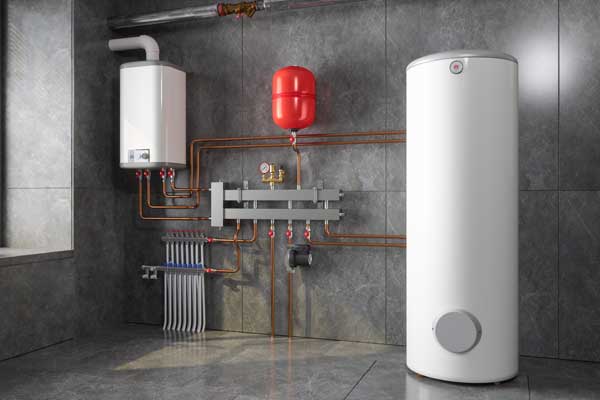How to Care for Your Home's Hot Water System Effectively
How to Care for Your Home's Hot Water System Effectively
Blog Article
Presented here down the page you'll find lots of wonderful news with regards to What Kind of Maintenance Do Water Heaters Need?.

Warm water is vital for daily convenience, whether it's for a rejuvenating shower or washing meals. To guarantee your warm water system runs efficiently and lasts much longer, routine upkeep is crucial. This article offers sensible ideas and insights on just how to maintain your home's warm water system to avoid disturbances and pricey repairs.
Introduction
Preserving your home's hot water system could appear daunting, however with a couple of easy actions, you can ensure it operates efficiently for many years to come. This overview covers whatever from recognizing your warm water system to DIY upkeep suggestions and recognizing when to employ professional aid.
Value of Maintaining Your Warm Water System
Normal maintenance not just extends the life expectancy of your hot water system yet also guarantees it runs effectively. Disregarding maintenance can cause decreased performance, higher power costs, and even early failing of the system.
Signs Your Warm Water System Needs Maintenance
Recognizing when your warm water system needs interest can protect against major concerns. Look out for indications such as irregular water temperature level, unusual sounds from the heating system, or rustic water.
Understanding Your Hot Water System
Before diving right into maintenance tasks, it's practical to recognize the fundamental parts of your warm water system. Typically, this consists of the water heater itself, pipes, anode rods, and temperature controls.
Month-to-month Upkeep Tasks
Normal month-to-month checks can help catch minor issues before they intensify.
Purging the Hot Water Heater
Purging your hot water heater eliminates debris accumulation, boosting efficiency and prolonging its life.
Checking and Changing Anode Rods
Anode poles prevent corrosion inside the tank. Checking and changing them when worn is critical.
Evaluating and Readjusting Temperature Level Setups
Changing the temperature level setups makes sure ideal performance and safety.
DIY Tips for Maintenance
You can execute a number of upkeep jobs on your own to maintain your warm water system in leading problem.
Checking for Leaks
Regularly examine pipes and links for leakages, as these can result in water damages and higher bills.
Testing Pressure Relief Valves
Testing the pressure safety valve guarantees it works properly and prevents too much stress buildup.
Shielding Pipelines
Protecting hot water pipes lowers warmth loss and can save power.
When to Call an Expert
While DIY upkeep is beneficial, some concerns need expert know-how.
Complicated Issues Calling For Expert Assistance
Instances consist of major leaks, electric issues, or if your water heater is continually underperforming.
Routine Professional Upkeep Advantages
Expert upkeep can include comprehensive examinations, tune-ups, and making sure compliance with safety and security requirements.
Final thought
Normal maintenance of your home's warm water system is necessary for efficiency, long life, and cost financial savings. By complying with these tips and recognizing when to seek specialist help, you can make sure a reputable supply of hot water without unanticipated disruptions.
Water Heater Maintenance Tips
Test the TPR Valve
Shut off the power and the cold-water supply valve. Place a bucket under the pipe connected to the temperature-pressure-release (TPR) valve on the top or side of the tank. (This valve opens if the tank pressure gets too high.) Lift the valve’s tab to let some water out, then let go. If water keeps flowing, drain the tank partway, unscrew the old valve with a pipe wrench, and install a new one. Check the Anode Rod
Put a hose to the tank’s drain cock and let out a few gallons of water. Now fit a 1 1/16-inch socket onto the rod’s hex head on top of the heater (or under its top plate) and unscrew the rod. If it’s less than ½ inch thick or coated with calcium, buy a new one, wrap its threads with Teflon tape, put it back in the tank, and tighten securely. Use this segmented rod if headroom above the tank is limited. Drain the Tank and Wash Out Sediment
Drain the remaining water in the tank into the bucket, then stir up the sediment on the tank’s bottom by briefly opening the cold-water supply valve. Drain and repeat until clean water comes out of the hose. Close the drain cock, refill the tank, and turn its power back on. Adjust the Temperature
Find the temperature dial on the side of the tank and unscrew its cover. Adjust the dial to 120 degrees using a flathead screwdriver. For every 10 degrees the temperature is lowered, you can expect to save up to 5 percent in energy costs. Turn the water heater off or the thermostat down to its lowest setting if you plan to be away from home for more than three days. Insulate the Pipes
Buy some self-sticking 3/8-inch-thick foam pipe insulation that matches the pipes’ diameter. Slide the foam over the hot-and cold-water pipes as far as you can reach. Insulating the cold-water pipe prevents condensation in summer. Peel the tape and squeeze the insulation closed. If the pipe is 6 inches or less from the flue, cover it with 1-inch-thick unfaced fiberglass pipe wrap. https://www.thisoldhouse.com/plumbing/21016402/how-to-maintain-a-water-heater

As an avid reader about How to Maintain Your Water Heater & Prolong its Life, I was thinking sharing that excerpt was really helpful. So long as you enjoyed our page if you please remember to pass it around. Kudos for being here. Kindly stop by our blog back soon.
Call Today Report this page